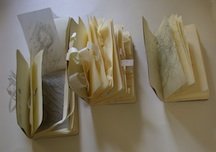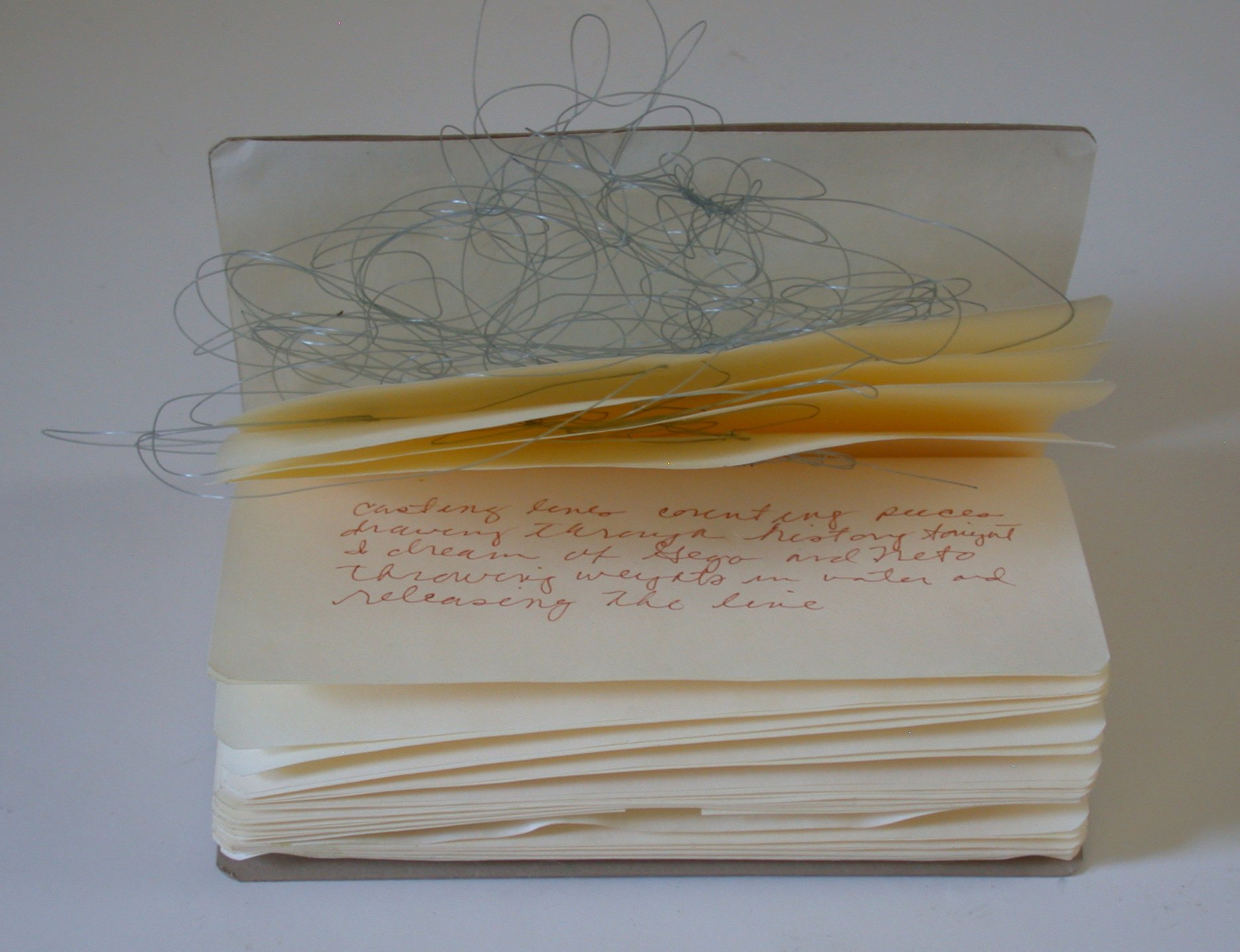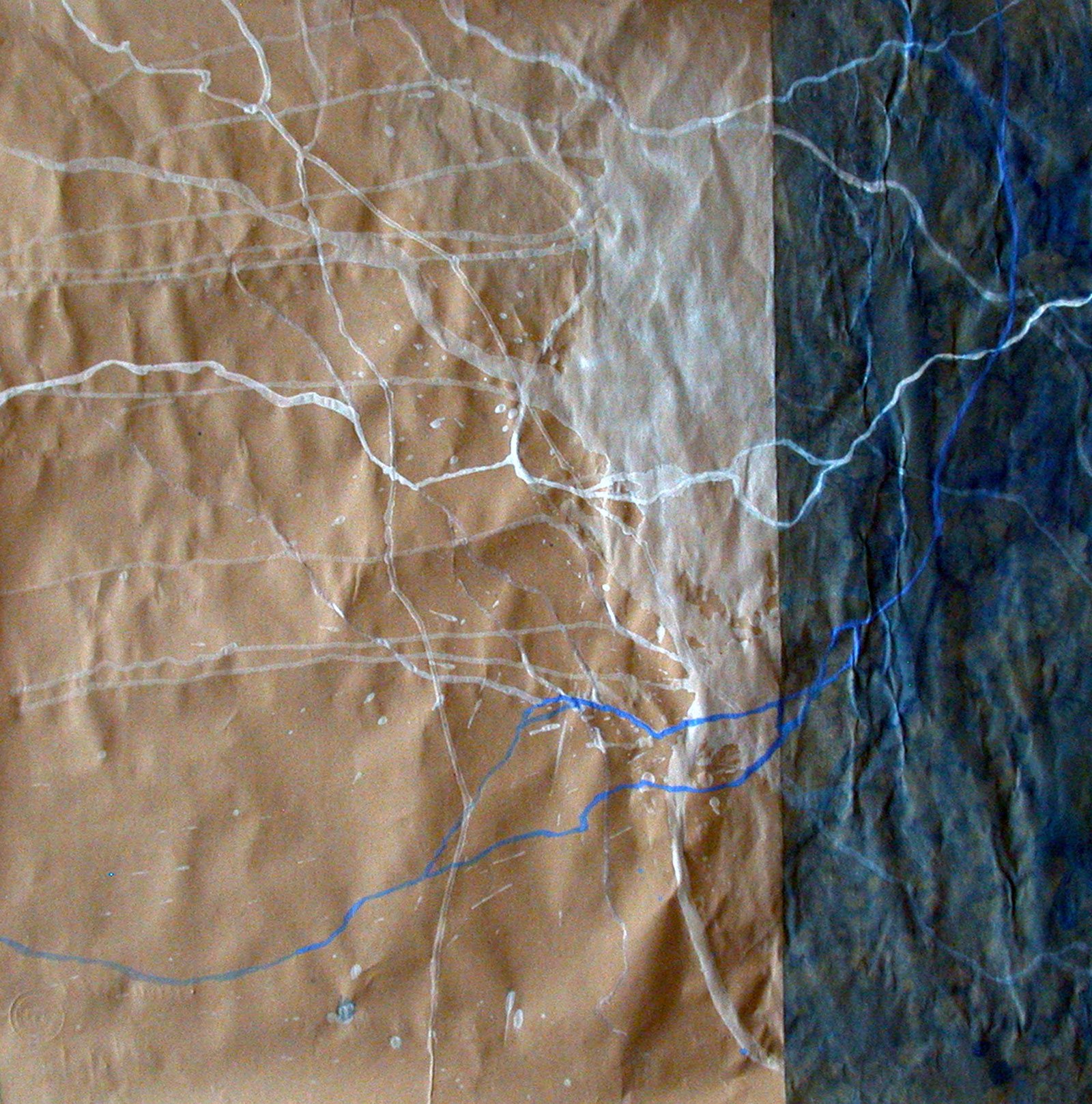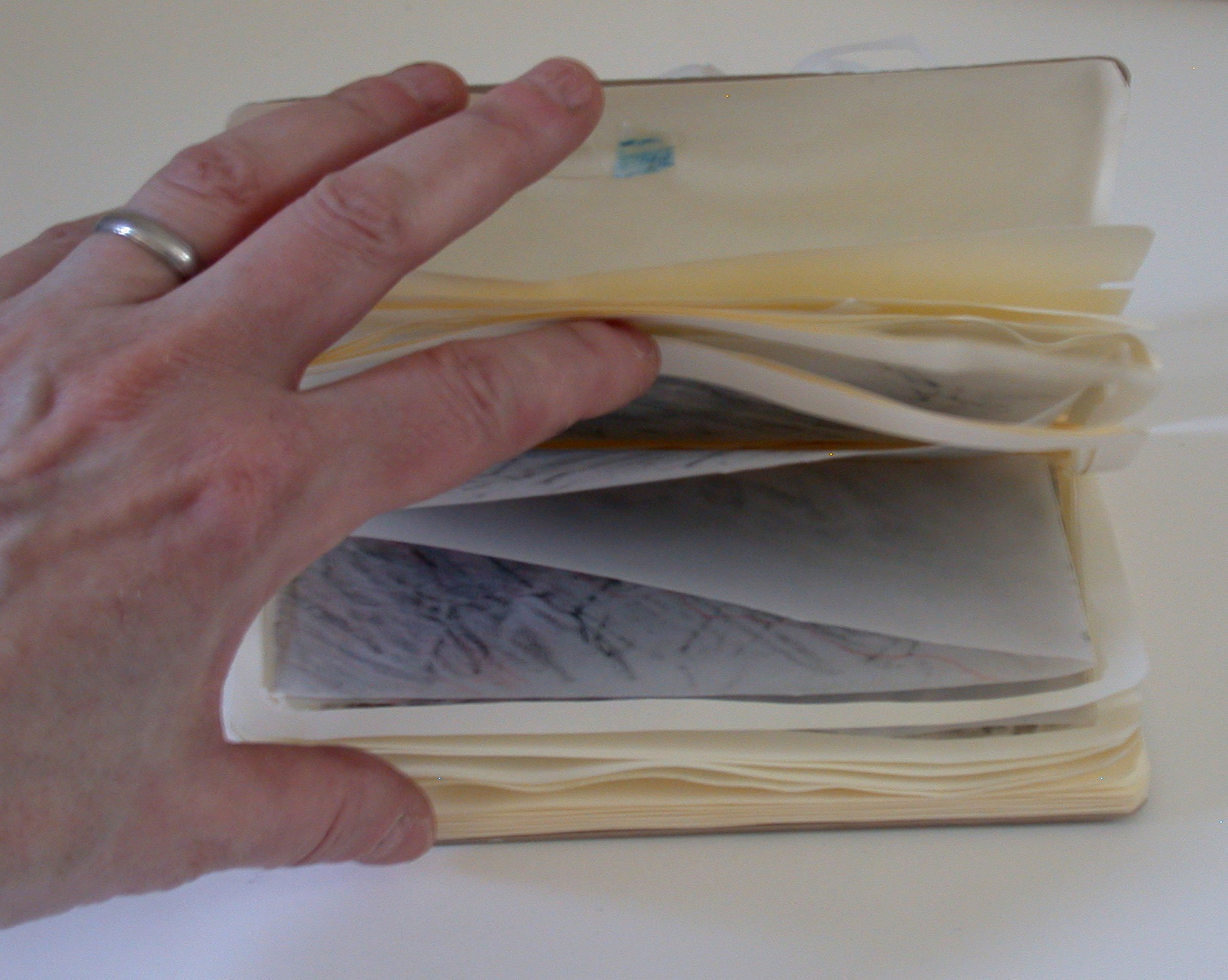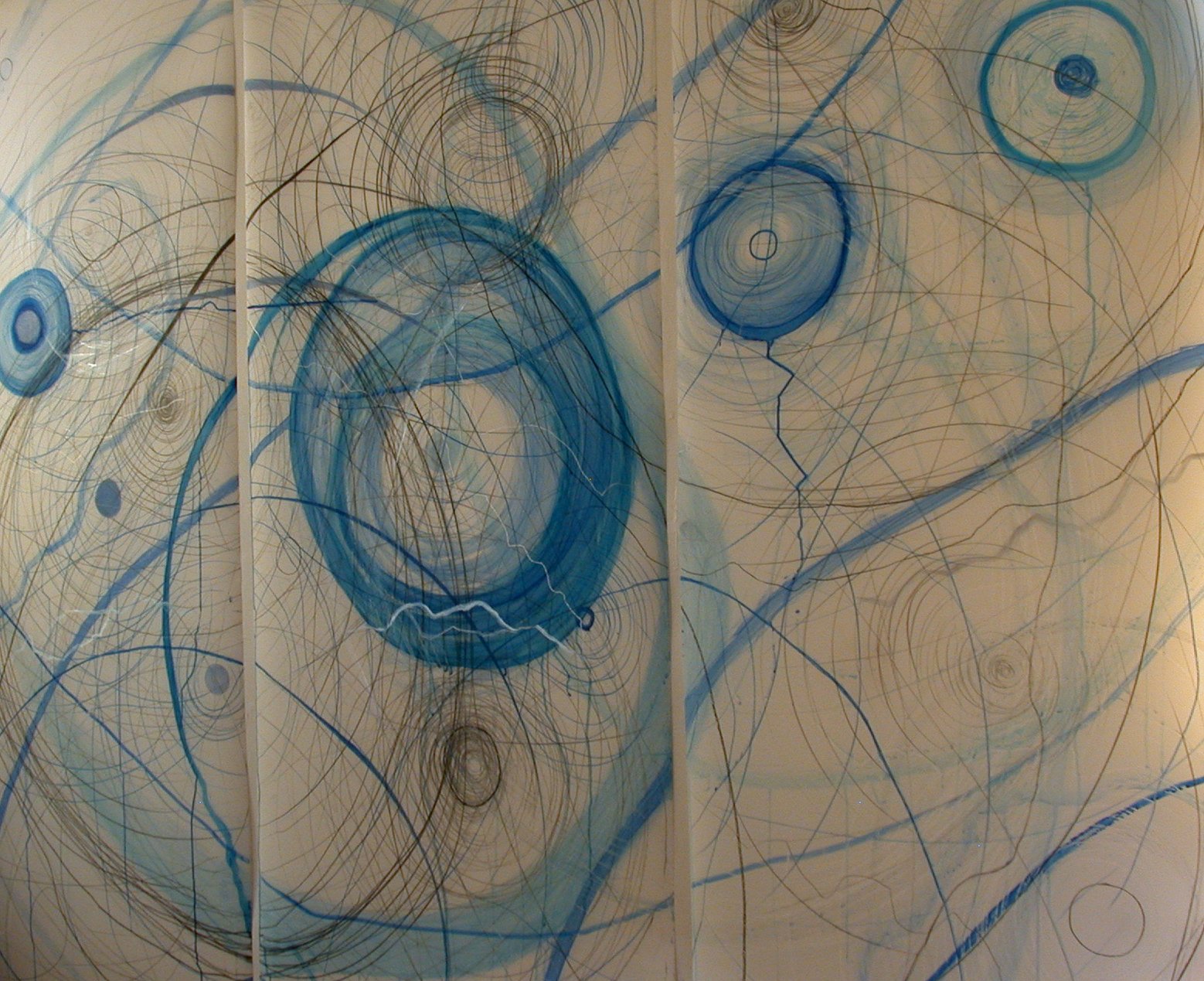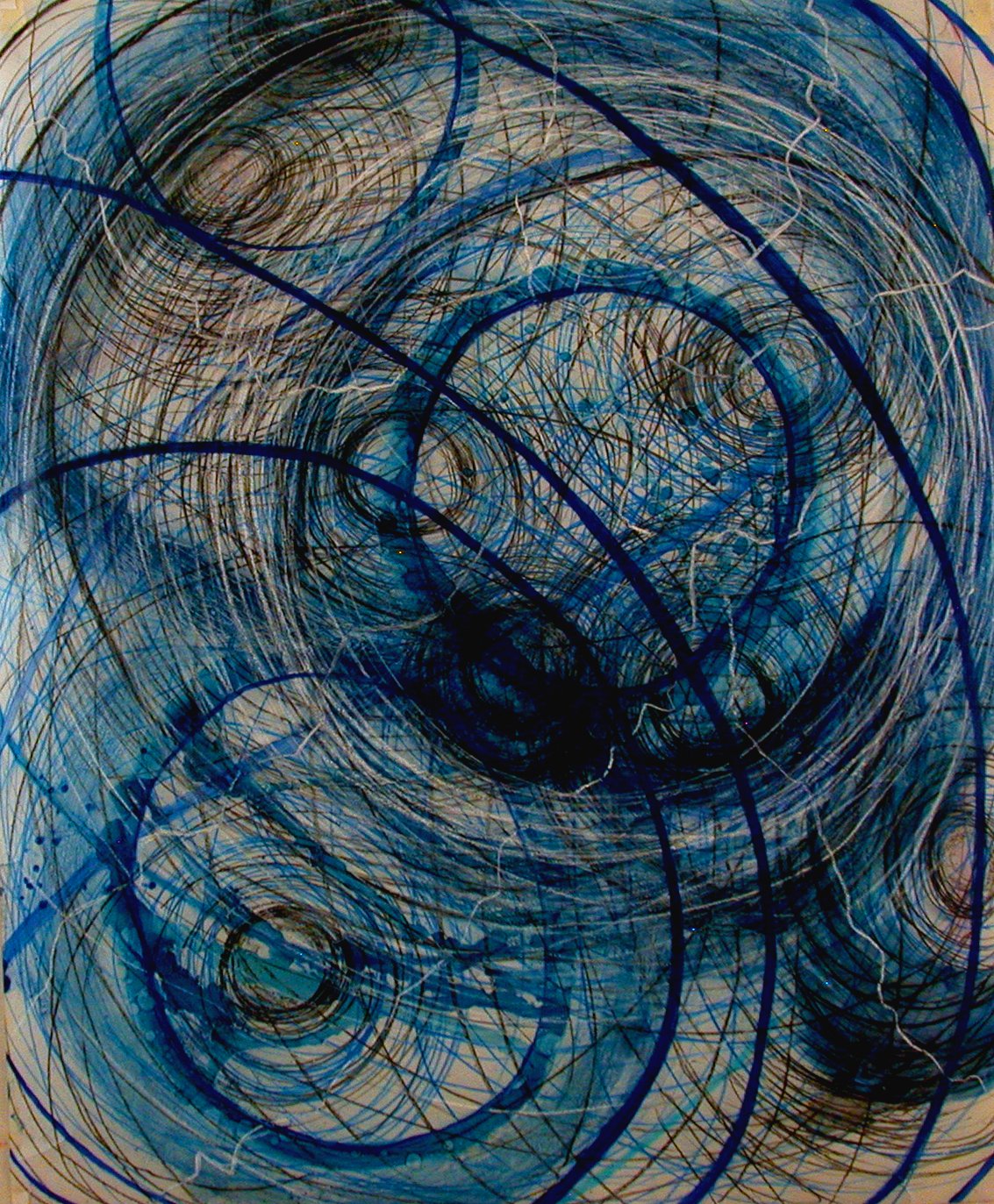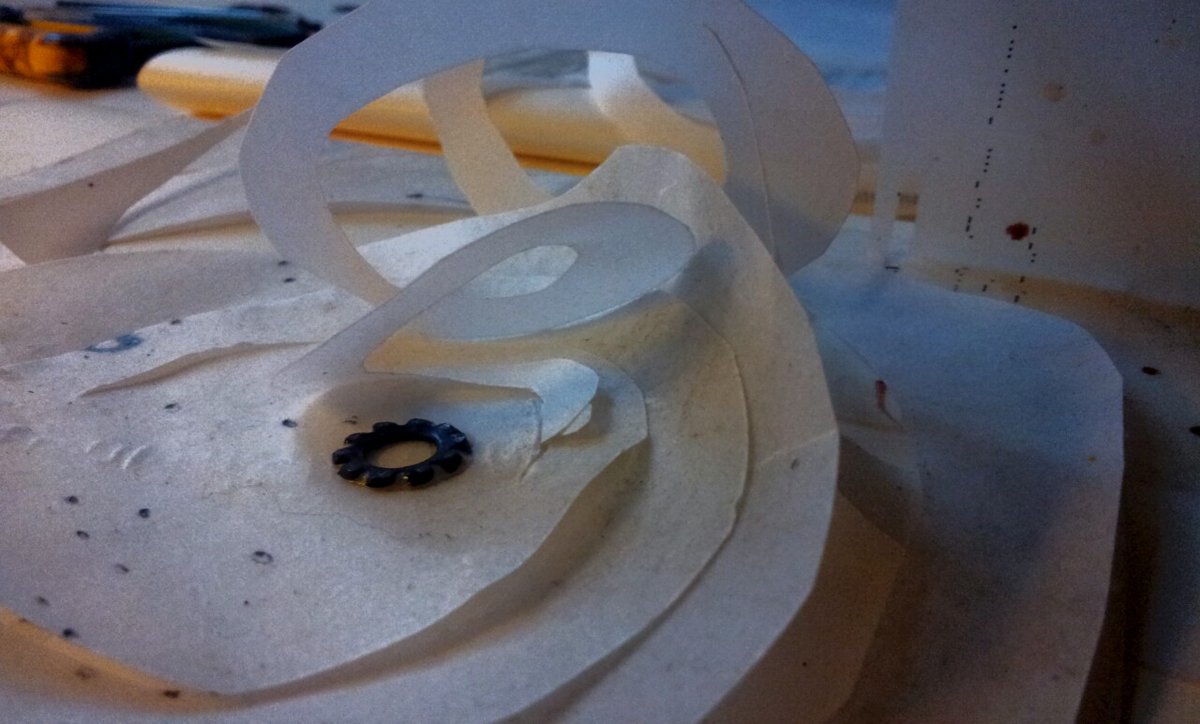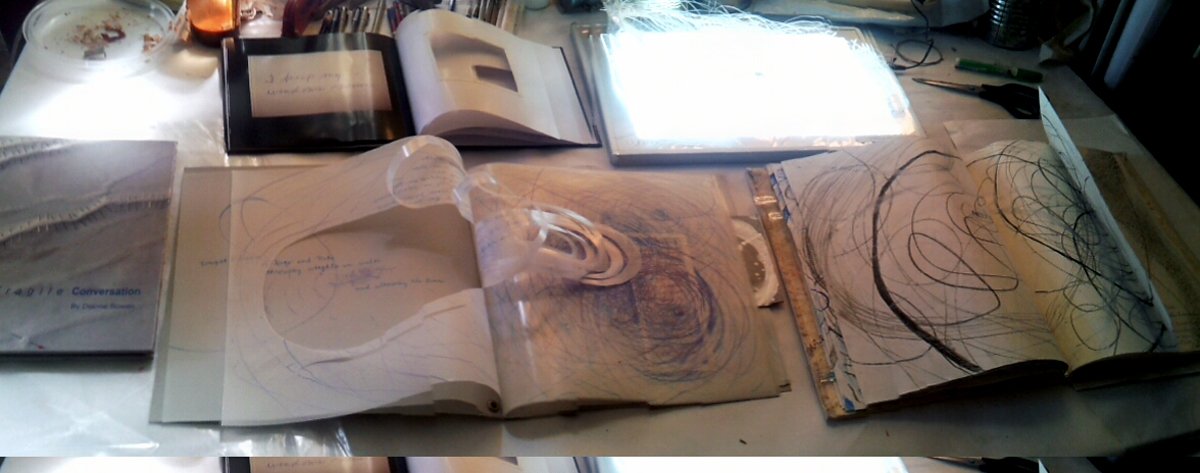Dianne Bowen
Dianne Bowen interconnects formal qualities of drawing, installation, poetry and video. She uses industrial, organic and archival media, including but not limited to archival pens, light-fast wax, multipurpose pencils, China markers, acid free papers, pigments, oil paint, canvas, guitar wires, minute seeds, eggshells, coral pods, plastic bubbles, copper phone wire, dress pins, magnifying glasses, recorded as well as found sounds, and images of her artistic process. Her drawings range from small paper works to large either loose or stretched canvases. Site-specific installations vary but reflect Bowen’s application of words and sound to render visual imagery. Bowen analyzes the meaning of her artwork and its implication through poetry and short video works.
Bowen has developed a learned and obsessive process. She listens to an urban euphony from her studio and focuses on distinctive sounds, such as light flickering, pen strokes on paper, hollow sounds echoing from the environment outside. Next, she dissects a sound through a series of “translations” beginning with her decoding the sound into a loose Morse code. The Morse code is then transcribed into letters and words. She rearranges words into a “Code Poem” that she has culled from common noise.
When drawing, she first considers surface and intended-use of material. After pinning a collection of fragments to the wall, she loosely tacks canvas to the wall and frequently changes lighting to enhance shadows and to expose inherent imperfections of the surface. Her drawings allude to prior drawings or poems, which are created during the process of the drawing. She leaves the work for a few days and returns to makes final edits. In comparison, her installations contain contorted Code Poems juxtaposed against architecture, environment and sculpture to vocalize certain lines of poetry.
In 2011, she began to film her drawing process. Her video shows that the sound of the line is akin to a guitar or other stringed instrument. As a result, Bowen points out that dogmas of the past are irrelevant to art’s present, and she propounds questions asking what it means to “draw.” In an attempt to visually render overlooked interactions between objects, sound, light, and human, Bowen gives voice to her line. Audible and inaudible noises are equally relevant subject matter as Bowen builds her idea from the communication and ambient sounds. The artist’s short drawing videos combine the movement of sound and line as representation occurs upon the papered, flat surface.
Bowen lives and works in New York City’s East Village. She graduated from School of Visual Arts, NY. She has participated in Artist Summer Institute, Governor’s Island, NY; completed the Brydcliffe Residency, Woodstock, NY, in 2008, and; studied at Research Travel Estonia, Ireland, Finland, Iceland, United States between 2000 and 2004. During 2005 through 2011, she had five solo shows in New York. Her work has been included in international gallery and museum group shows.
Dianne Bowen passed away in April 2017.

